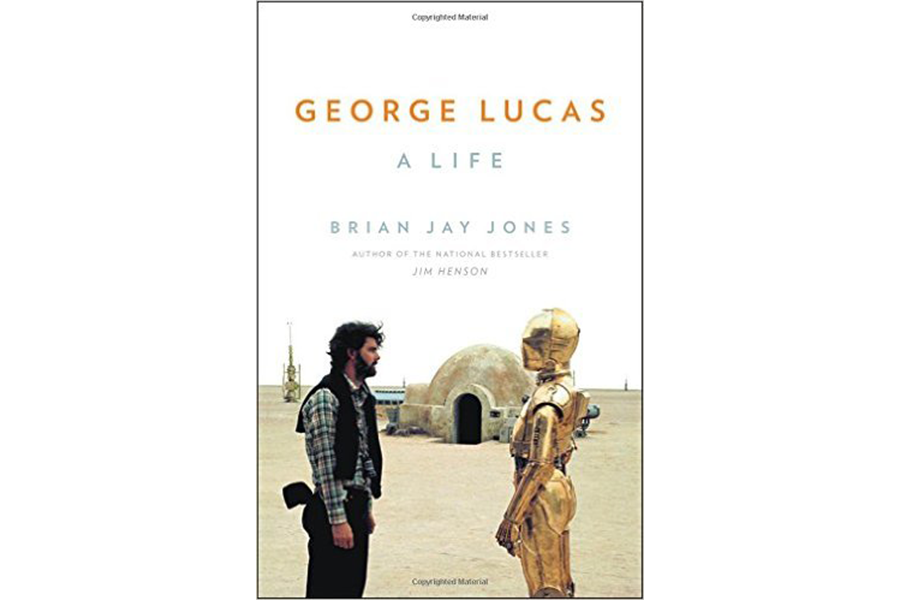'George Lucas' is crammed – a bit too full – with fascinating stuff
Loading...
Many other American directors have produced more artistically profound work than George Lucas, but can any match the breadth and depth of his impact? "Star Wars" redefined the way a science fiction film should look. Without the reused appearance of everything from buildings on Tatooine to the hull of the Millennium Falcon, we wouldn’t have the rattling, leaking Nostromo of the first "Alien" film, or the dented and worn "Battlestar Galactica." The "Indiana Jones" movies have inspired comic books, a TV series, and, back in the day, a spike in the number of archaeology majors. And George Lucas’s technological impact is arguably even greater: during the making of the first "Star Wars" film, his crew discovered repeatedly that the desired effects couldn’t be created with existing technology so they invented it themselves. And the digital media behind Pixar, which has changed movie animation for the foreseeable future, were created on Lucas’s Skywalker Ranch.
But when a man’s imaginative work is echoed in everything from ecclesiastical sculpture to cartoons to literary theory you know it’s truly seeped into our cultural bones. A limestone carving of Darth Vader stares from the walls of the National Cathedral. In a memorable sequence from "The Simpsons," Bart’s rush to catch the school bus seamlessly morphs into a spoof of an escape scene from the first "Raiders" film. And a 1989 study of the literatures of former British colonies was entitled – what else? – "The Empire Writes Back."
Unfortunately the narrative of Brian Jay Jones’s George Lucas: A Life, almost collapses under the weight of this embarrassment of riches. Up until the aftermath of the first "Star Wars" film, Jones’s biography provides a captivating look at very specific parts of American cultural history: the almost surreally innocent world of 1950s American teenagers; the eccentric, isolated USC film school disdained by the major studios but percolating with brilliance; and Lucas’s tumultuous artistic and social circle, which included both Steven Spielberg and Francis Ford Coppola.
And the account of the making and release of "Star Wars" is riveting. The creation of the film was a Herculean collaborative effort, and the inherent difficulties weren’t made any easier by the prickliness of Lucas himself. In a fabulously self-revealing quote, Lucas says of the filming at Elstree Studios, “I ended up having to be nice to everybody, which is hard when you don’t like a lot of people.” And Jones’s account of the release of "Star Wars" and its aftermath – the lines snaking around the block, the critics’ debates, Lucas’s own self-reproach (“Star Wars is about 25% of what I wanted it to be,” he told Rolling Stone) is fascinating.
Furthermore, Jones’s account of Lucas’s life and work leading up to the completion of "Star Wars" has some fascinating cinematic what-ifs. Had Lucas taken up Coppola’s offer to direct "Apocalypse Now," the past 40 years of American film could have been entirely different. Not only would there have been no "Star Wars" or "Indiana Jones," but also no Industrial Light and Magic, Lucas’s visual effects company that perfected CGI: so no "Jurassic Park" and no "Lord of the Rings." No Pixar.
And try to imagine a "Star Wars" in which Lucas hired some of the other actors who had shown up to audition: John Travolta, Nick Nolte, and Tommy Lee Jones.
But in subsequent chapters Jones piles on details to a degree that will put off all but the most devoted "Star Wars" geeks, although even these have some gems, such as the account of a 1978 "Stars Wars Holiday Special" set on a planet of Wookies. When first planning the show Lucas specifically forbade subtitles.
Think about that. Take all the time you need.
Otherwise, it’s all too much: Most readers will get lost in accounts of merchandising, additions to DVD versions of the original films, and grousing in online chat rooms about midi-chlorians (no, really). Any sense of a story of Lucas’s life is almost crushed under the weight of details: staffing, corporate politics, business deals, planning, financing and building Skywalker Ranch. And the sense of excitement that infuses the chapters on the first "Star Wars" films is utterly missing from Jones’s writing on the post-trilogy films, although quoting critics’ snark does provide some comic relief: Newsweek called A New Hope’s sequel “Attack of the Groans,” while Peter Travers complained, “Lucas still can’t write dialogue that doesn’t induce projectile vomiting.” And the sections on Lucas’ family life read like an afterthought (although to be fair, for Lucas having a family was something of an afterthought).
"George Lucas: A Life" contains a great deal of fascinating information. For lay readers, it’s a serious contribution to the history of American cinema. But they should skim some chapters and passages: Only the most diehard Lucas fans will be willing to wade through this book in its entirety, word by word.
.








